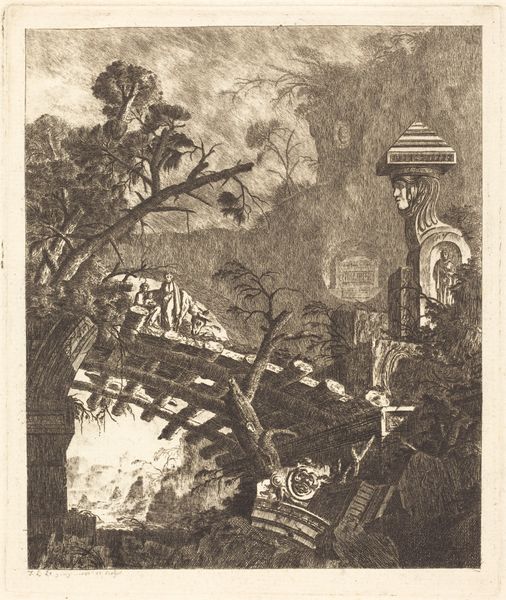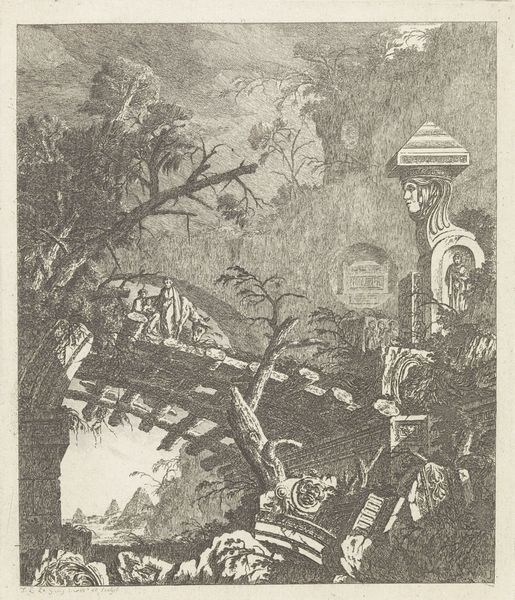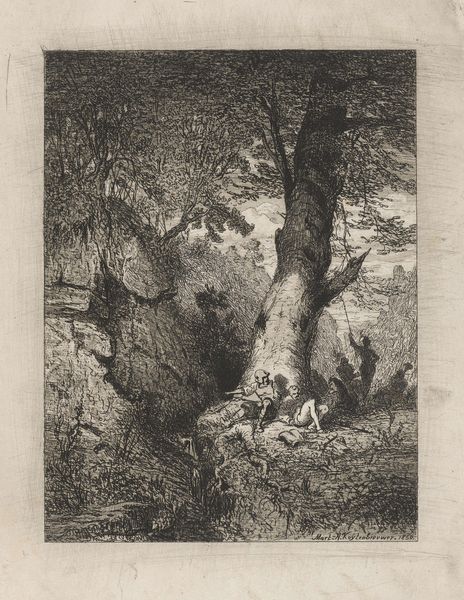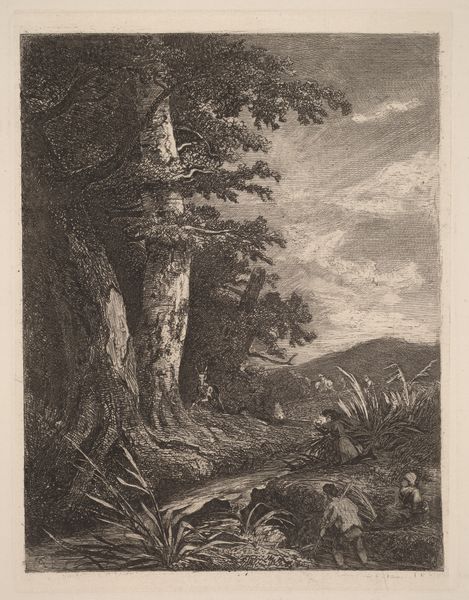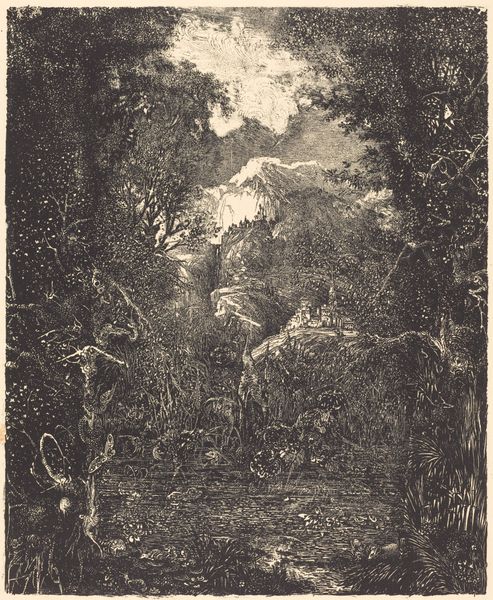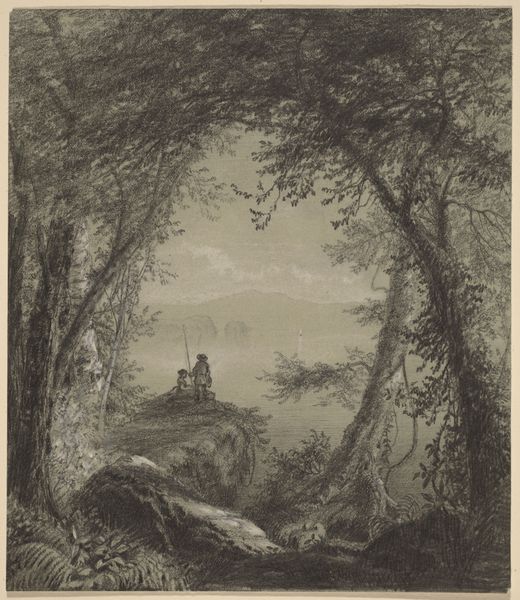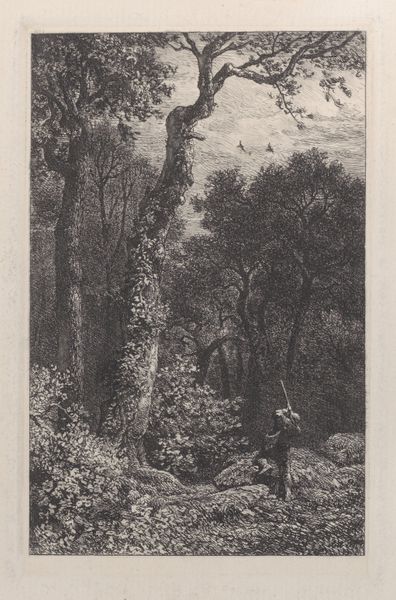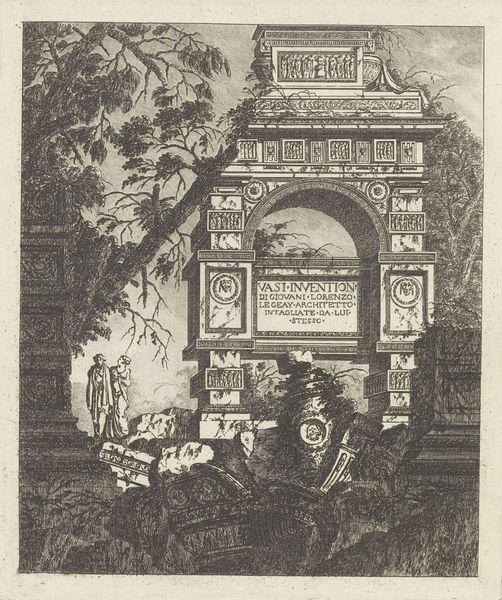
Dimensions: plate: 18.7 x 15.8 cm (7 3/8 x 6 1/4 in.)
Copyright: National Gallery of Art: CC0 1.0
Jean Laurent Legeay created this etching, "Figure Standing under a Stone Arch," sometime in the 18th century. The printmaking process involves meticulous labor. Legeay would have covered a metal plate with an acid-resistant wax, then used a sharp needle to draw his composition, exposing the metal beneath. Immersing the plate in acid would etch the lines, which then hold ink for printing. This demanding process contrasts with the image's ruinous subject, a crumbling archway overgrown with nature, and a small figure dwarfed by the scene. Legeay seems interested in the romantic appeal of decay, but we can also consider the labor embedded in both the printmaking and the original architecture. The arch, with its classical details, represents skilled craftsmanship and a hierarchical society capable of monumental projects. The print, too, reflects a social context: the rise of print culture, making images accessible to a wider audience. Ultimately, understanding this etching requires acknowledging the interplay between its making, its subject, and its time.
Comments
No comments
Be the first to comment and join the conversation on the ultimate creative platform.
